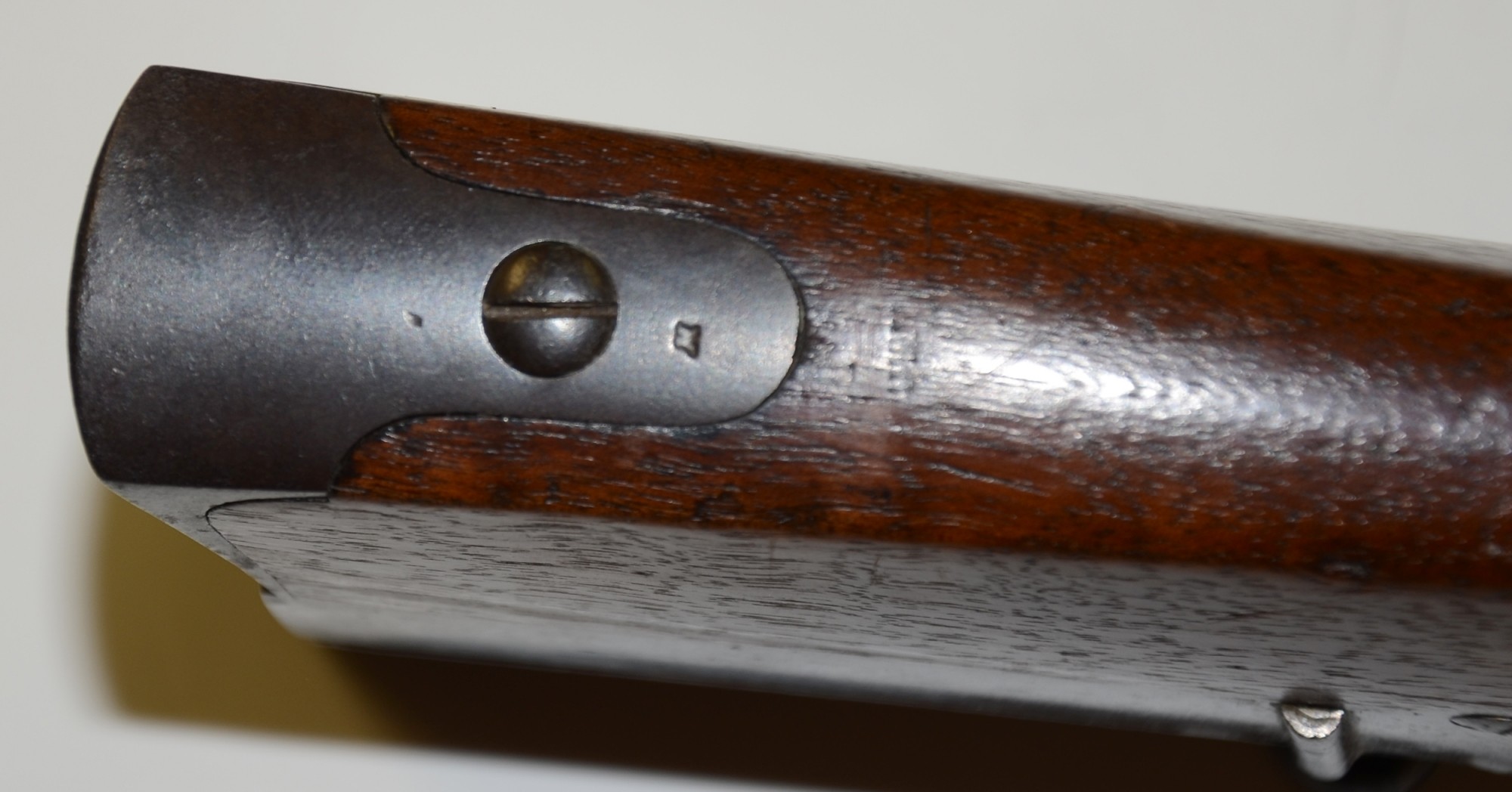

Overall in Very Good to Excellent condition.

2 Cartouches on wood on left side beneath the saddle bar : indicate government inspection, additional inspector marks, on the barrel “E.A.W.” and the bottom of the forearm is stamped with a “H.H.H.” sub-inspection mark. APRIL 12TH 1859.” Mark left side of receiver: “C. HARTFORD CONN.” Notches on top of barrel and receiver for alignment. Mark forward of sight, “SHARPS RIFLE / MANUFG. Mark on top of barrel, “NEW MODEL 1863.”. Standard features include an iron buttplate, iron loading lever serves as a trigger guard, one iron band, percussion nipple was designed to utilize a tape primer system that did not work very well and was usually disabled, but conventional cap served effectively, hinged Sharps sight, saddle bar and riding ring on left side, rifling with six lands and grooves. Soldiers could fire up to 10 rounds per minute with the Sharps while the vast majority of Confederate soldiers could only fire up to 3 rounds per. Bennett formerly of the 11 th Ohio Infantry and who, at the time of the issue of this weapon, was with the 4 th Regiment US Veteran Volunteers. McAulay, was issued to Private William H. This serial number 43874 Sharps is a no-doubt-about-it Native American. This Sharps rifle bears serial number C35210 which, according to records published in CIVIL WAR SHARPS CARBINES & RIFLES by Earl J. The Model 1863, reflected only minor improvements over the Model 1859, mostly elimination of the patchbox. Most were used by the union soldiers although the Confederate army did have some. New England Firearms Company Serial Number Lookup Gun History By Serial Number. The Sharps carbine was the most significantly utilized carbine of the Civil War, it was a single shot percussion breechloader using paper cartridge and and revolutionized hand weaponry. Sharps Rifle Manufacturing Co., Hartford, Connecticut, serial numbers for the “New Model 1863” generally run 75,000 to 140,000, some overlap with other models. Sharps Carbine, Mew Model 1863, Delivered to the U.S.


 0 kommentar(er)
0 kommentar(er)
